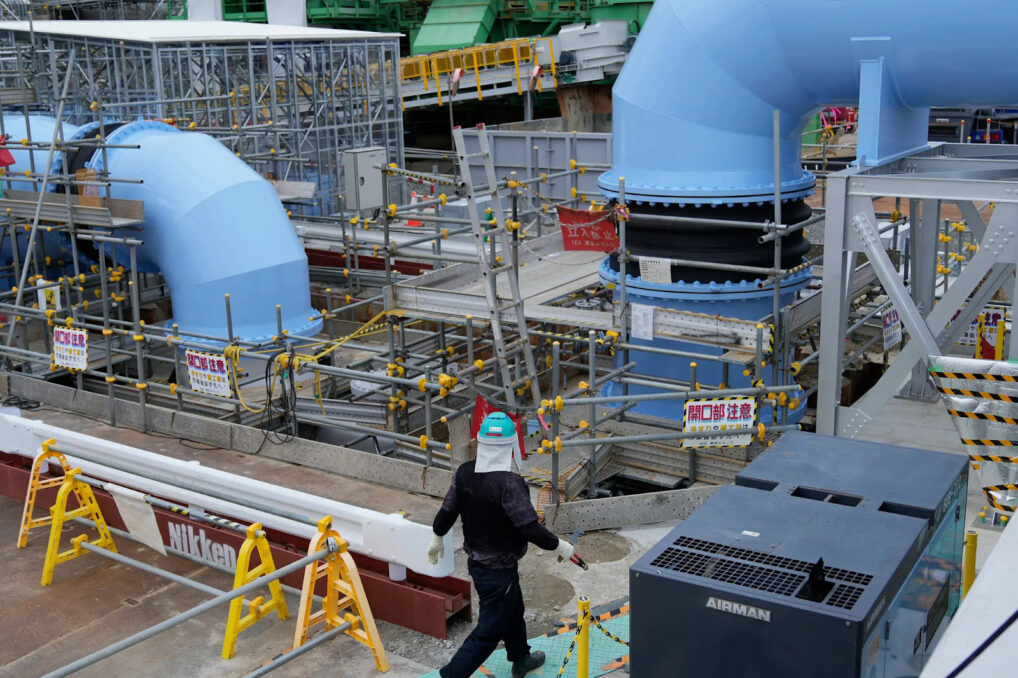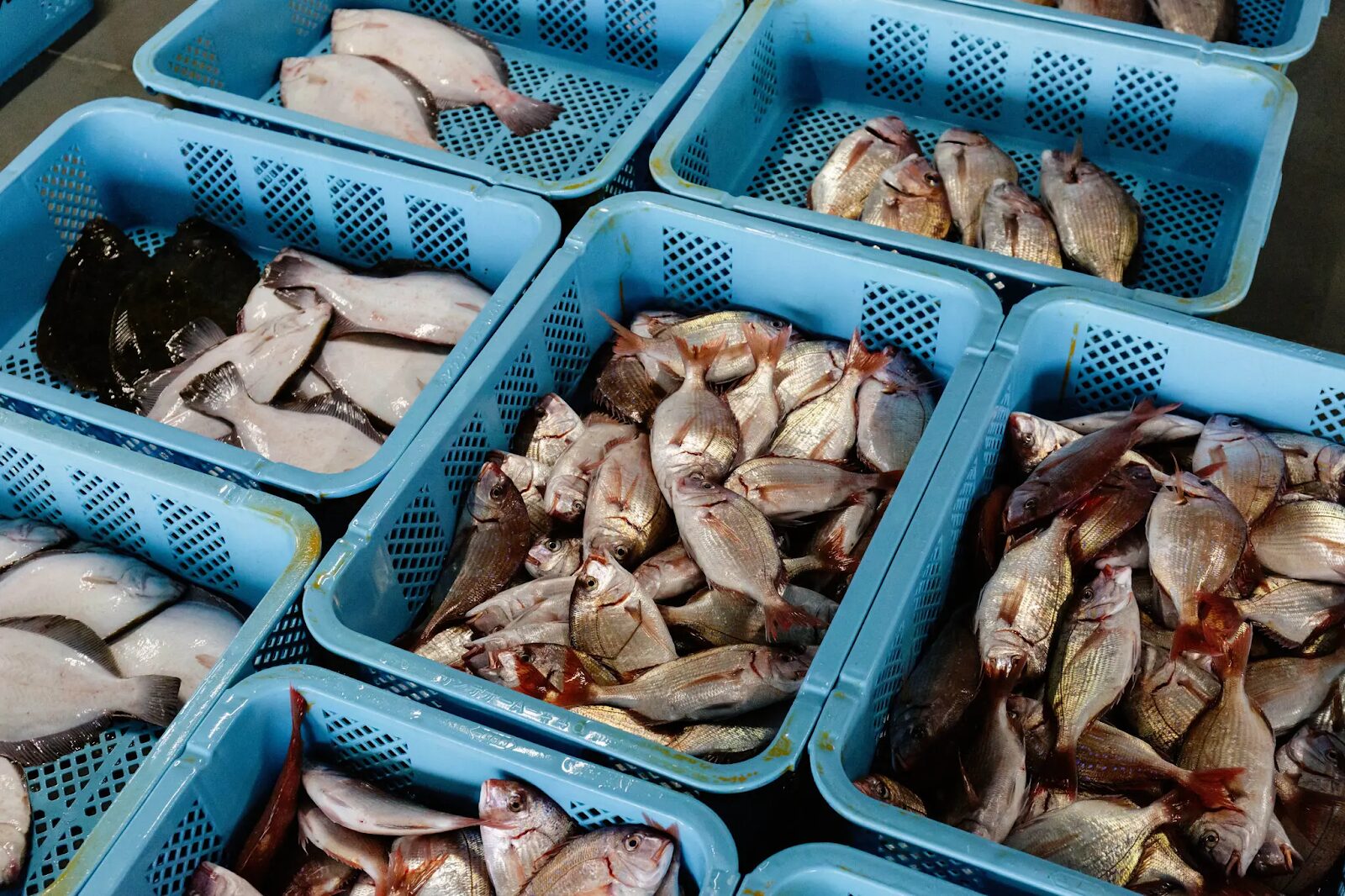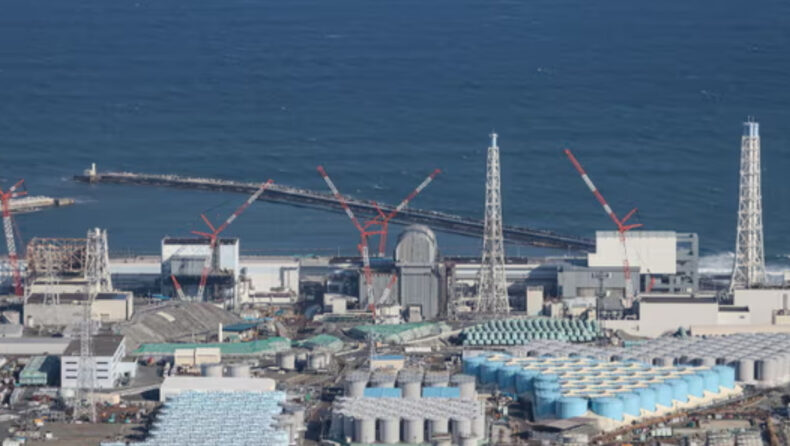Japan is all set to begin releasing treated radioactive wastewater from the wrecked Fukushima Daiichi nuclear power plant into the Pacific Ocean from Thursday. This decision came in as defiance of opposition from domestic communities, international countries, and some scientists.
Japan’s Prime Minister, Fumio Kishida, after meeting with his cabinet on Tuesday, instructed the plant’s operator, Tokyo Electric Power (Tepco) for a swift preparation per the plans approved by nuclear regulators for the discharge of water. He informed that the release would be initiated on Thursday if the “weather and ocean conditions permitted”
The International Atomic Energy Agency (IAEA), the UN’s nuclear watchdog, had approved the release a few weeks prior and stated that the discharge would have “negligible” radioactive effects on humans and the environment.
Fukushima Nuclear power plant; a growing concern:

In the year 2011, an earthquake and tsunami triggered a triple meltdown in Fukushima. One of the biggest challenges Japan’s government and Tokyo Electric had to face since then was what to do with the accumulating tons of water used to cool nuclear fuel rods.
The plant is located on the country’s east coast, around 220 kilometers (137 miles) northeast of the capital Tokyo, and the Japanese government has indicated that the water discharge is an essential step in the time-consuming and expensive process of decommissioning the facility.
The Treated wastewater:

There are about a thousand sky-blue tanks used to hold the effluent at the Fukushima nuclear power plant. Since the 2011 tsunami devastated the facility, 1.34 million tonnes of water—enough to fill 500 Olympic-size swimming pools—have accumulated. Japan, however, is running out of space to store water now.
Tokyo Electric (Tepco) circulates water through the destroyed reactors to cool melted fuel that is still too radioactive to remove. The water picks up radioactive nuclides as it flows through the reactors. Tepco filters the water through an effective method, often more than once, to eliminate all radioactive elements save for tritium, a hydrogen isotope. In modest doses, tritium is not harmful to human health, according to experts, and removing it would be prohibitively expensive.
Only 30% of the approximately 473,000 tons of water in the tanks have undergone thorough treatment, leaving only tritium behind, according to Tepco’s website. Over 30 to 40 years, the water would be pushed into the ocean via a tunnel located 1 kilometer from the coast.
This procedure is similar to that used by other nuclear plants to purify the cooling water including those in China, South Korea, and the United States, used to treat cooling water. Tritium is present in the filtered water that is discharged into the ocean.
The opposition:
It is a political issue for Japan just as much as a technical or environmental issue. Although the international body determined that it was safe to release the water, detractors at home and in neighboring nations have questioned the agency’s and the government’s intentions. The Chinese government vehemently opposed the plan. A Chinese internet user called for a boycott of Japanese goods in response to the news on Tuesday. In the wake of the growing opposition, People’s Daily, a state media organization owned by the Communist Party in China, referred to the treated water as Japan’s “nuclear sewage”
Hong Kong’s leader John Lee has threatened Japan with restrictions. Hong Kong is an essential market for Japanese seafood exports. He told the media that he had given the city’s administration the order to “immediately activate” import restrictions on Japanese seafood.
In Japan, both Fukushima and the national fisheries association have shown their growing concerns that once the water is released by the Tepco, both domestic and international customers may be reluctant to eat seafood from the region.
Furthermore, Ken Buesseler, a marine radiochemist at the Woods Hole Oceanographic Institution, said that Japan is running by the fundamental principle of “just trust us” instead of investigating other alternative options like building more tanks or using treated water to make cement. He says, “I think they just want the cheapest, fastest solution, which is a pipe in the ocean.”
In an interview with The New York Times, Masatsugu Shibata, a 67-year-old fisherman in Japan expressed his fear regarding the decision to discharge the water. He called it a “life-or-death issue for fishermen as many people would stop eating fish”

Japan’s preventive measures:
Water treated in Japan’s filtration system is referred to as “purified” by the Ministry of Economy, Trade, and Industry, which also makes sure that before any water is released into the ocean, it will be treated until it satisfies all applicable regulations for radioactive materials other than tritium.
Japan’s Prime Minister has also acknowledged the concerns of the fishermen and tried to assure them of the safety of the discharge water. The government has also established funds totaling 30bn ($206m) to compensate local fishermen for reputational harm and 50bn to handle any financial impact on their business, according to the Kyodo news agency.













